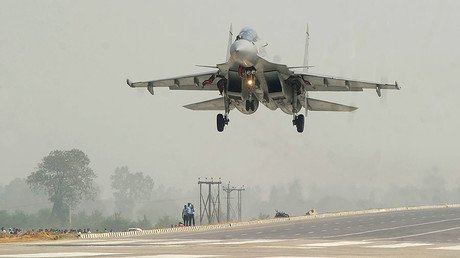Bank of America makes case for oil prices above $100 per barrel

The odds of an oil price spike this year are much higher than the prevailing consensus in the market, according to a new report from Bank of America Merrill Lynch.
The oil market has been tightening rapidly this year, due to OPEC+ cuts taking supply off of the market, outages in Iran and Venezuela, and a slowdown in US shale. But forthcoming regulations from the International Maritime Organization (IMO) could provide an additional jolt, particularly as global inventories decline against the backdrop of a tightening market.
“Now, with distillate inventories at the low end of the range, we see an analogy to 2007/08 when the world run out of diesel refining capacity,” Bank of America Merrill Lynch wrote in a note on April 12.
Also on rt.com Russia replaces Venezuelan crude on European markets“Back then, as Saudi Arabia lifted heavy crude production to meet rising global demand for distillates, diesel-to-bunker fuel spreads blew out and so did light-heavy crude spreads. A similar situation could develop over the coming months as ship owners temporarily up their distillate burn to transition out of high sulphur into ultra low sulpur bunker fuel due to the new IMO2020 rules.”
There are important differences between today and the price spike of 2008, Bank of America notes, including greater spare capacity in 2019, an additional 1.1 million barrels per day (mb/d) of refining capacity set to come online, and the expectation that US shale could quickly add supply in the event of higher oil prices.
“Still, unlike the gradual tightening in diesel markets of 2007/08, the world faces a major one-off jump in distillate demand,” Bank of America argues, referring to worldwide regulations on marine fuels set to take effect at the start of 2020.
Read more on Oilprice.com: The tipping point in Trump’s quest for energy dominance
The rules lower the limit of sulfur concentration in marine fuels from 3.5 percent to just 0.5 percent, which will force shipowners to switch away from heavy fuel oils. Instead, the alternatives include scrubbing technology and a greater use of low-sulfur fuels, including distillates.
Bank of America says that the regulations could push up distillate demand by 1.1 mb/d year-on-year, which comes on top of the 0.5 mb/d annual trend growth rate, and also on top of the cyclical high during winter. Higher distillate demand could push up crude oil prices as refiners race to turn crude into distillates.
“About 60 percent of the average crude barrel can be turned into distillate with the right refining toolkit. But that figure drops below 50 percent for heavy oil, potentially curbing supply,” Bank of America wrote.
Also on rt.com Venezuela wants to sell gold reserves to shore up economy devastated by US sanctions – reportsThe bottom line is that there is a chance that oil prices rise much higher this year. “In our view, the risk of a Brent crude oil price spike is significantly higher than options markets suggest,” Bank of America warned.
There are plenty of factors that could head off a price spike, including higher US shale production, an economic slowdown, a decision by OPEC+ to abandon the cuts, a decision by the US to extend waivers on Iran sanctions, or a release of oil from the US strategic petroleum reserve, just to name a few.
“However, as shippers transition to IMO2020, a cyclical upturn led by trade combined with a cold winter could result in the largest ever surge in distillate demand. If we add a weaker dollar to the mix, we have all the ingredients for a spike in crude oil prices,” Bank of America said.
Read more on Oilprice.com: Trump’s new ambassador scrambles to salvage relationship with Riyadh
The investment bank was skeptical that US shale could fill the gap, at least in the short run. Capital discipline has already led to a slowdown, and the industry could need higher prices for longer-dated futures in order to really incentivize new drilling. In any event, it will also take time for the industry to respond, which means that “rising oil prices today will only begin to affect oil production in 4Q19 and 2020,” the bank noted. As such, while US shale could add new supply and keep global oil prices in check, it may arrive a little late to avoid a price spike.
Bank of America said that the Brent options market only implies a two-percent chance that Brent spikes to $100 per barrel. The bank says everyone might be underestimating these odds. The “massive surge in distillate demand” later this year could “potentially push oil prices above $100 per barrel,” the bank concluded.
This article was originally published on Oilprice.com














